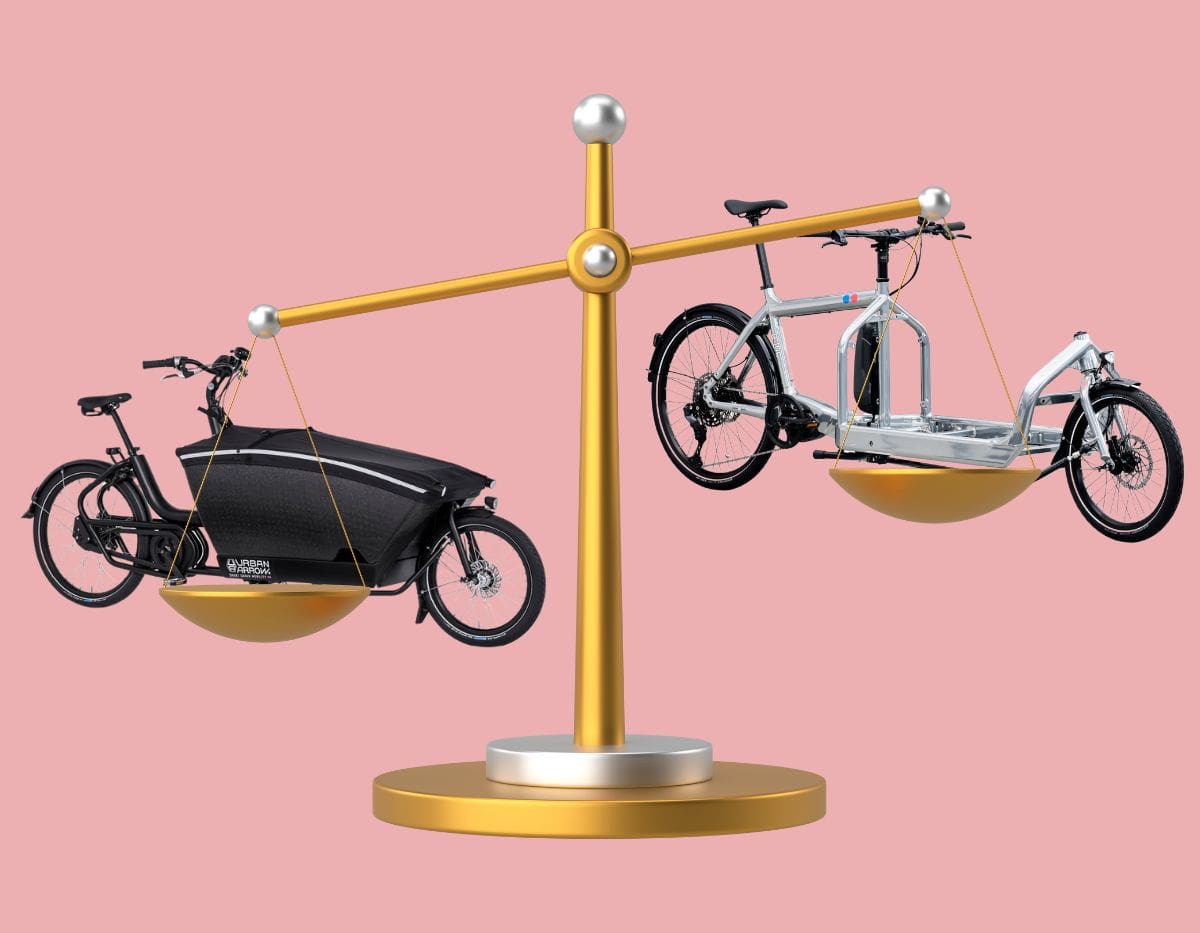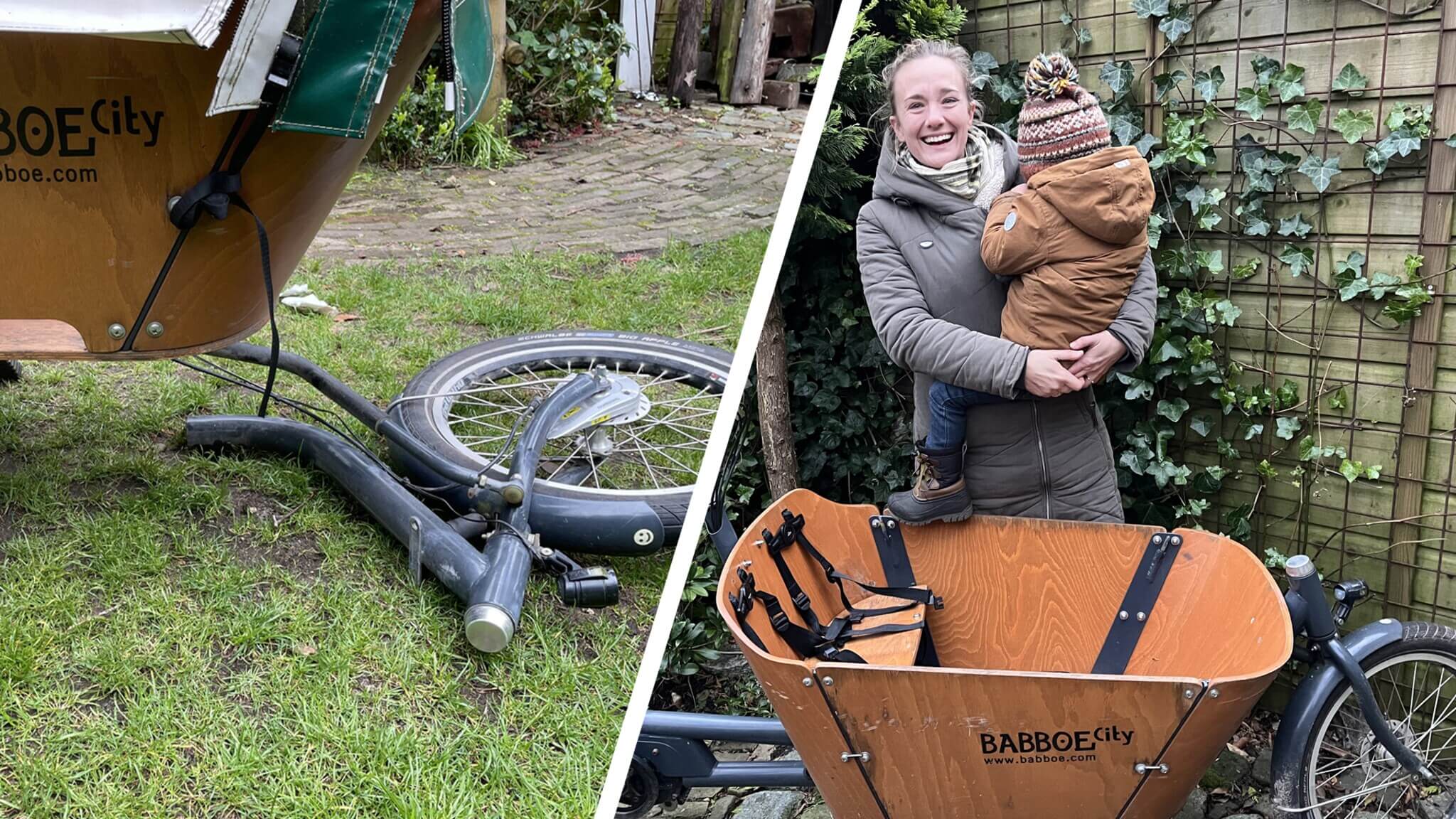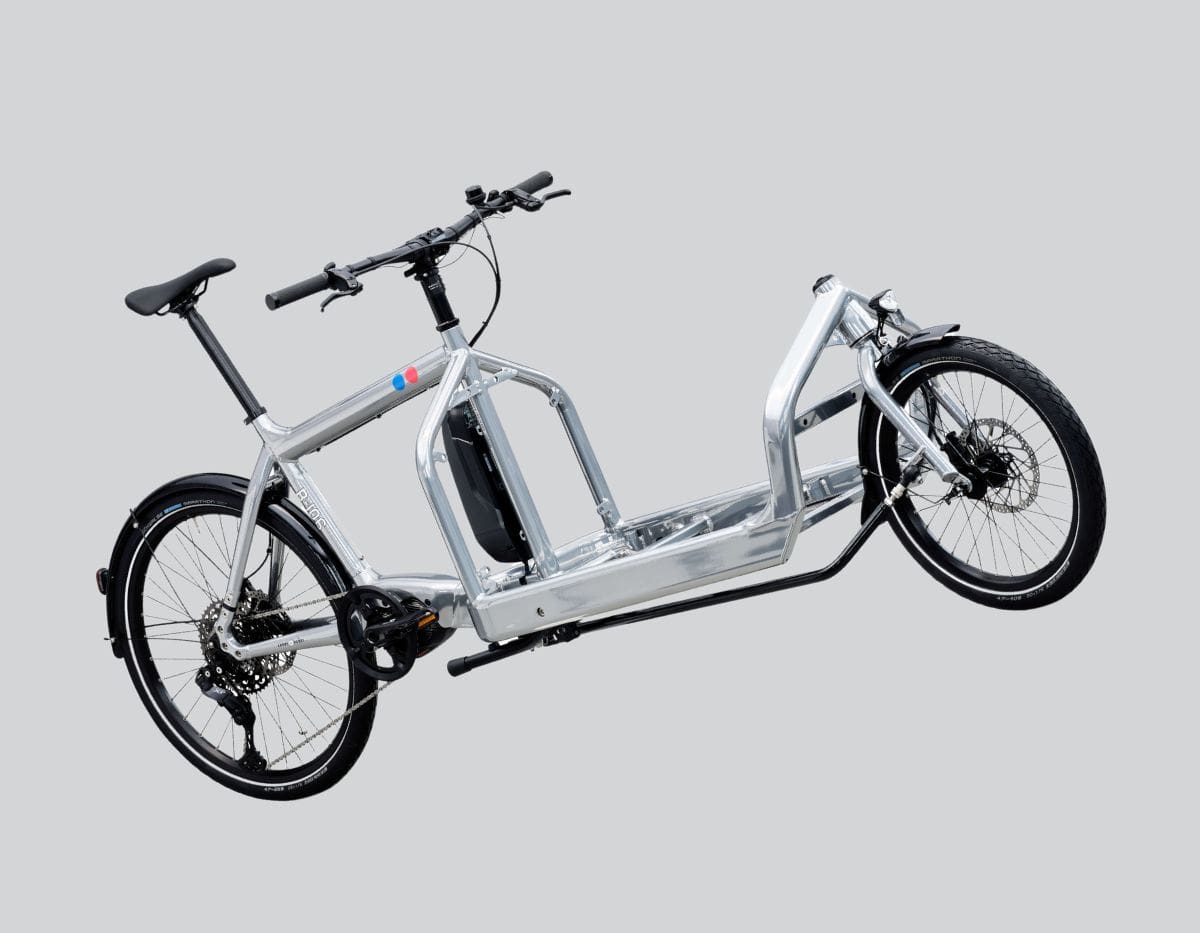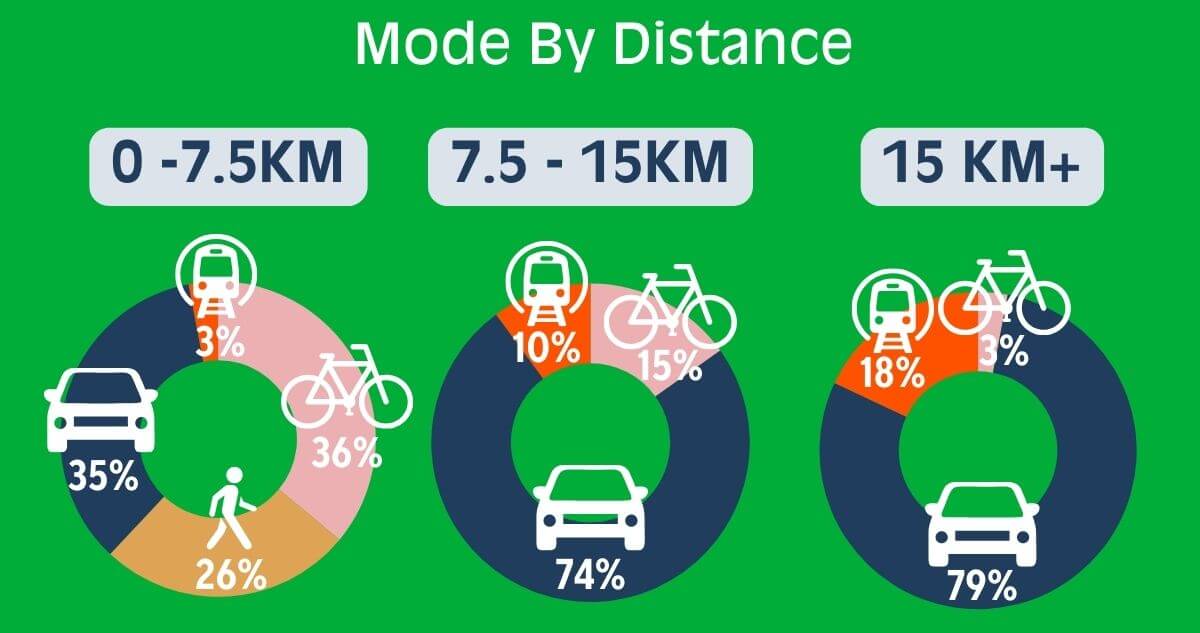Something strange happened as the cargo bike made its way from Denmark. On its journey through Holland, Germany, and finally North America, it got heavier. A lot heavier. The cargo bike was born in Denmark, and Denmark still builds the lightest, strongest, and most modular cargo bikes on the market. Today, buyers come in asking for big torque and high peak wattage, forgetting that the heavier the bike, the more that power gets vaporized. A look at the numbers reveals that weight is the precondition for power. Ready for some lightweight math? Let’s dive in!
Power-to-Weight Ratio
Power-to-weight ratios measure how efficiently a bike converts motor power into motion relative to its weight. In a lighter frame, a given motor output results in faster acceleration, higher efficiency, and better performance uphill.

A heavier bike with the same motor can feel sluggish, especially when carrying children or groceries. In other words, a higher power-to-weight ratio is not just a number – it’s how quickly the bike responds, how effortlessly it climbs, and how far it goes on a charge.
Lightweight Beginning, Heavy Evolution
Back in 2007, Bullitt became the first Danish company to mass-produce the “Long John,” the world’s first two-wheeled cargo bike. Designed for speed and efficiency, a Bullitt electric bike weighs just 55 pounds. Most competitors, in contrast, tip the scales at over 100 pounds. That difference may not sound like much on paper, but when lifting a bike onto a curb or accelerating with a heavy load, it matters a great deal. A lighter frame also maximizes the effectiveness of the motor, ensuring that every watt contributes to moving you and your cargo forward.
Dutch Cargo Bikes: Wooden Shoes
As the concept moved from Denmark to the Netherlands, the cargo bike somehow became heavier. In 2007, a Dutch company called Babboe began mass-producing steel cargo bikes with wooden boxes, which weighed over 145 pounds. By 2023, structural issues forced recalls of many of these models.

In 2011, Urban Arrow emerged as a competitor to Babboe. A Dutch brand, it took cues from Bullitt by using aluminum frames. Despite this, their bikes still weighed in at 115 lbs – double the weight of a Bullitt! The Urban Arrow may have corrected the drift when it came to Babboe, but it didn’t correct the drift when it came to Bullitt. If Bullitt is a Nike Air Max, then Urban Arrow is a wooden shoe.
Powerful Math
Now, many buyers opt for an Urban Arrow because of its high-torque Bosch Cargo Line motor. But torque alone isn’t enough if the bike is too heavy. The Bosch motor produces 85 Nm of torque, but torque (Nm) does not directly determine power without knowing the motor’s cadence (RPM). The average cadence for an electric bike is 80RPM. This is converted to radians per second (rad/s), which in the case of the Urban Arrow is 8.38. This is multiplied by 85nm which is how we determine the motors peak power of 711.9W. Finally, this is divided by the bikes weight. The final number, in kilograms, is 13.64W per kilogram. As we’ll see, this is not very powerful at all.

Take the Bullitt E6100. Its motor produces 65 Nm – less than the Bosch – but the frame is far lighter, and adding the most popular accessories like the BBX side panels, honeycomb floorboard, and foldable seat adds only 8.6 kilograms. The resulting power-to-weight comes to roughly 16.2 W/kg, comfortably ahead of the Urban Arrow.
Meanwhile, the Bullitt EP801, with 85 Nm and the same lightweight frame plus accessories, pushes this to about 28.5 W/kg—more than double the Urban Arrow. As we’ll soon see, no bike holds a candle to the Bullitt EP801. At the same time, we’ve seen that a slightly lower torque motor can match or outperform a heavier competitor if the frame is light enough.
German Cargo Bikes: Dialling Back
If the Dutch tend to overbuild, German brands like Riese & Müller tend to over-engineer. German brands like Riese & Müller take a different approach. Their Load 75 model, with dual suspension and a large battery, weighs 84 pounds, and adding the kids pack brings it closer to 95 pounds. With a 725 Wh battery and that total weight, the power-to-weight ratio sits around 18.5 W/kg before the rider and additional cargo. It’s an engineering marvel, but – when compared to the Bullitt EP801 – the extra mass eats into acceleration and efficiency, especially under heavy loads.

We Reddit and Listened
This article has gotten a fair share of hits from Reddit, and many were right to comment that our analysis thus far missed some critical context, namely the weight of the rider, various additional kids packs (both the Bullitt’s and R&M Loads are sold “bare”), and then the cargo itself! Indeed, once we include this, the picture shifts – and that’s where things get far more complex. After all, when total system weight is dominated by the rider and cargo, motor power becomes the main factor in performance, and the bike’s frame weight makes less of a difference under lighter loads. Thanks Reddit friends for helping us dig into this even more!
So, let’s take the average human weight of 62kg and redo the math. Along the way, we’ll add more weight up to 200kg, which is the max load-weight of all cargo bikes under review (this includes cargo and rider). Here are the results:

The chart shows that lightweight frames dominate when carrying only the rider, with the EP801 standing out for its combination of power and minimal weight. As loads increase, the advantage of a lighter frame diminishes and motor output becomes the primary factor, but the EP801 continues to lead, particularly under medium loads. By the time the total weight approaches the 200-kilogram maximum, all four bikes start to converge, yet the EP801 maintains a slight edge, and the E6100 remains an exceptional value, balancing performance, weight, and cost.
Adding Human Power to the Equation
But, there’s more. Up to now, we’ve been treating the rider as dead weight in the system – but of course that’s not true. Riders contribute their own wattage to the drivetrain, and even a steady, non-athletic rider will put out around 150 watts of power. When we add that contribution on top of the motor’s output, the numbers shift in interesting ways. On the low end, all of these bikes are regulated to deliver 250W of continuous (nominal) power, which keeps them surprisingly close together under flat, steady cruising – although the Bullitt’s lighter weight still puts them ahead.

At the other extreme, when the conditions demand it, motors can surge to their peak torque outputs – in the 540-710W range for the systems under review – and that’s where lighter frames really shine. Here are the numbers:

With the rider’s wattage factored in, the Bullitt continues to stand out – especially from a value standpoint. Even its more modest E6100 motor holds its own against heavier competitors thanks to the frame’s low mass. Add the EP801’s 85Nm motor into the same lightweight package, and it becomes clear why the Bullitt feels so alive on the road: your own steady effort stacks on top of the motor’s efficiency, multiplying into a ride that climbs, accelerates, and carries loads with less wasted energy. The heavier Dutch and German bikes can match peak torque on paper, but once you account for the rider’s input, the Bullitt’s minimalism keeps it ahead in both responsiveness and real-world value.
Weight a Sec..
When it comes to cargo bikes, context is everything. These machines aren’t meant to be Land Rovers on two wheels, nor should they be so heavy that lifting them over a curb becomes an ordeal. Yet that’s exactly the trap some brands fall into – Urban Arrow builds em’ heavy, while Riese & Müller pile on the features of a long-haul SUV. The real question is: what is good weight, and what’s bad weight?

Good weight is value-added. And, that means it matches the conditions of the bikes use-case. These use-case of a cargo bike falls within the “last mile.” But, what is this last mile? (It’s not literally one mile). According to Dutch studies, most urban trips are under 7.5 km, exactly the distance where bikes excel and cars can’t compete. In fact, Bike Share programs around the world follow the same Dutch data and penalize trips that exceed thirty minutes (about 7-8km, max).
For this kind of city cycling, range beyond 100 km and full-suspension frames aren’t just unnecessary; they’re counterproductive. Downtown riders spend their days stringing together dozens of short trips that are too far to walk and too close to drive. For that purpose, a lighter, responsive bike is worth more than an overbuilt machine that promises features you’ll rarely need. Sure, you can buy a Land Rover just to fetch a latte – but….why?
Power to Weight and Value
If all cargo bikes under discussion provide the range needed for the “last mile,” then the real question is whether your cargo bike can handle all that cargo you want to carry. And, that’s a question of power to weight. Ultimately, power-to-weight is what matters in real-world cargo riding. As we’ve seen, Danish minimalism – lightweight, modular, and durable – outperforms heavier competitors, especially when it comes to value.

At nearly half the price of (some of) the competition, Bullitt E6100 provides the best value, offering solid performance, practicality, and affordability, while the EP801 stands as the ultimate cargo bike, unbeatable in efficiency and power for the money. That’s the math, but there’s also testimony. Here in Canada, FedEx has 115 Bullitt E6100’s in their fleet, and these bikes carry a crazy amount of weight up Vancouver-size hills while logging over 12,000km per year. In other words, if you’re looking to carry moderate loads in the “last mile,” a Bullitt maximizes use-case with minimal weight and gadgetry.
Learn More
Questions about a Bullitt? We can help!




